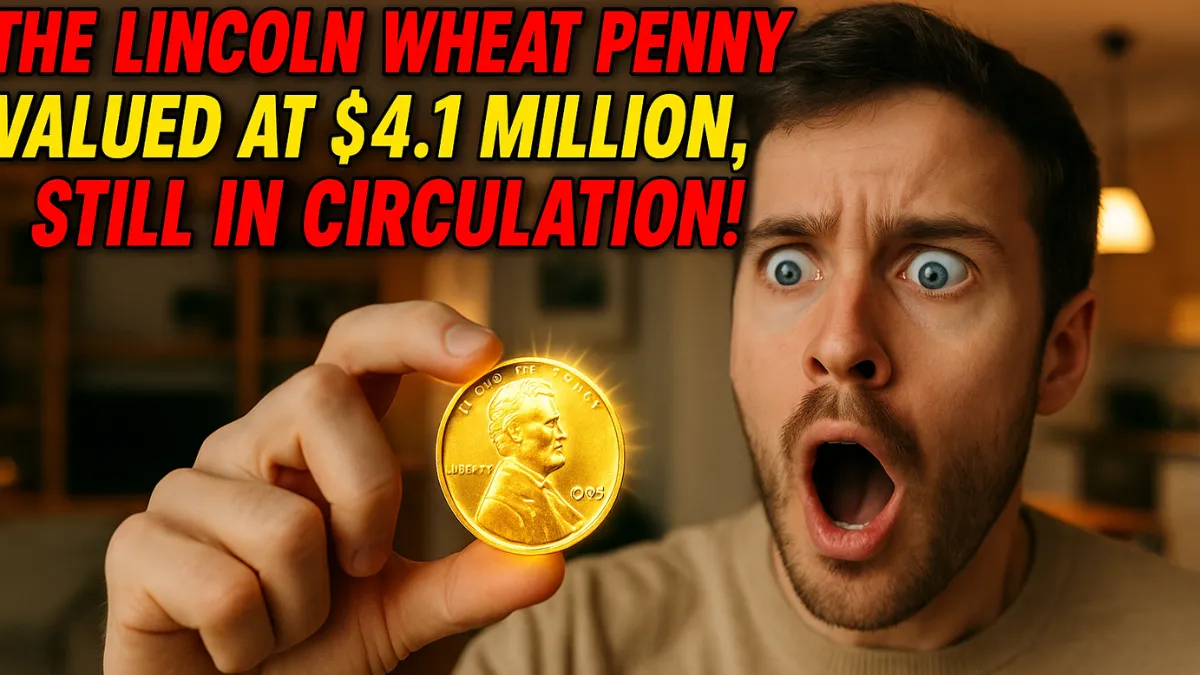Imagine this: you’re rummaging through your spare change—maybe it’s buried in your car’s cupholder or an old jar tucked away under the sink—and you come across a penny. At first glance, it seems completely ordinary. But what if that seemingly mundane coin was actually worth $4.1 million?
It may sound like something from a movie, but for a lucky few collectors, it’s a real-life fortune. We’re talking about the rare 1943 Bronze Lincoln Wheat Penny, one of the most valuable coins in U.S. history.
Let’s take a closer look at what makes this penny so extraordinary—and how you might have one hiding in your collection.
The Penny That Began It All: A Quick History
In 1909, to commemorate Abraham Lincoln’s 100th birthday, the U.S. Mint introduced the Lincoln Wheat Penny, marking the first time a U.S. coin featured a real person. Designed by Victor David Brenner, the obverse shows Lincoln’s profile, and the reverse features two wheat stalks (hence the nickname “Wheat Penny”). It remained in circulation until 1958, when the Lincoln Memorial design took over.
While most Wheat Pennies are only worth their face value, a few exceptionally rare versions are highly sought after by collectors, such as the famous 1943 Bronze edition.
Why the 1943 Bronze Lincoln Penny Is So Valuable
Here’s the twist: During World War II, the U.S. faced a shortage of copper, which was needed for military equipment. As a result, in 1943, the Mint began making pennies out of steel coated with zinc. However, a small number of leftover bronze planchets from 1942 were mistakenly used to strike some pennies.
This mix-up created a handful of bronze 1943 pennies that were never meant to exist. These are now considered one of the most significant coin errors in U.S. history, and only about 20 to 30 of them are believed to still be in existence today.
One such penny sold for $1.7 million in 2010, and another, in nearly perfect condition, fetched $4.1 million in 2021. A simple mistake has turned into an incredibly lucrative discovery.
How to Tell If You Have a 1943 Bronze Penny
Got a coin jar sitting around? Here’s how to check if that penny might be more valuable than you think:
- Magnet Test: Steel pennies stick to magnets, while bronze ones don’t. If your 1943 penny doesn’t stick to a magnet, you might be holding something rare.
- Examine the Color: Steel pennies have a silvery appearance, while bronze pennies have a reddish-brown color.
- Weigh It: Steel pennies weigh about 2.7 grams, while bronze pennies are around 3.11 grams. A small digital scale can help you figure it out.
- Mint Marks: Look just under the date for a tiny letter:
- No mint mark = Philadelphia
- “D” = Denver
- “S” = San Francisco
Other Wheat Pennies That Could Be Worth a Lot
The 1943 Bronze Penny isn’t the only rare coin collectors are after. Here are a few more that might surprise you:
- 1909-S VDB: This coin features the designer’s initials and is one of the earliest issues. It can be worth as much as $100,000.
- 1914-D: With only 1.2 million made, this penny can fetch up to $150,000.
- 1922 No-D: A mistake coin that lacks the mint mark from Denver. These can go for $10,000 or more.
Are These Coins Still Out There?
It may sound unbelievable, but yes, some of these rare pennies could still be floating around today. You might find them in:
- Old piggy banks or change jars
- Estate sales or garage sales
- Inherited coin collections
- Coin rolls from the bank
So, next time you reach for your loose change, remember: that “worthless” penny could be worth a small fortune.
What to Do If You Think You’ve Found One
- Don’t Clean It: Avoid cleaning the coin. Scrubbing it can damage the surface and significantly decrease its value.
- Get It Authenticated: Reach out to a professional coin grading service like PCGS or NGC to confirm its authenticity.
- Consider Auctioning It: If it’s the real deal, consider auctioning it through a reputable house like Heritage Auctions to get the best price.
Final Thoughts
The Lincoln Wheat Penny is more than just a piece of pocket change—it’s a slice of American history. And in some rare instances, it could be the key to a life-changing windfall. So, the next time you empty your pockets or sift through an old coin jar, keep your eyes peeled. That “insignificant” penny in your hand could be your ticket to a multi-million-dollar treasure.
Who knows? The next penny you find might just be your $4.1 million miracle.
FAQs
What makes the 1943 Bronze Penny so valuable?
It’s a rare minting error where leftover bronze planchets were used for steel pennies, making it one of the rarest coins in history.
How can I tell if I have a 1943 Bronze Penny?
Use a magnet—steel pennies stick, bronze ones don’t. Also check the color, weight (3.11 grams), and mint mark for authenticity.
Where can I find rare pennies?
Look in old coin jars, garage sales, estate cleanouts, or even rolls of coins from the bank to find potential treasures.
Should I clean my penny before selling it?
No, cleaning can damage its surface and decrease its value. Always leave rare coins in their original condition.

